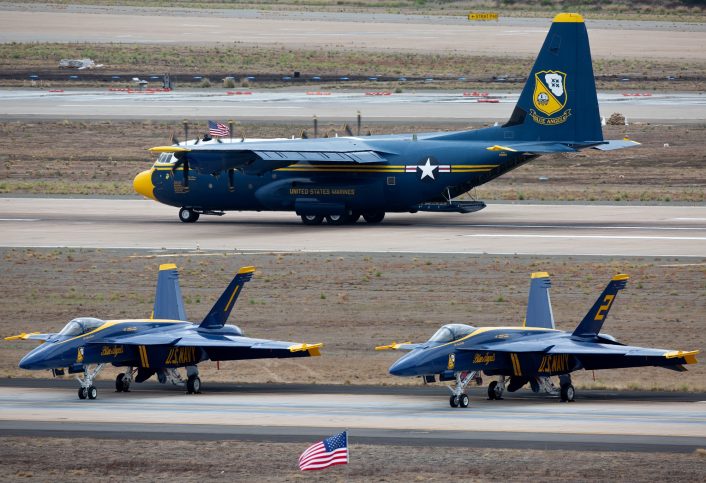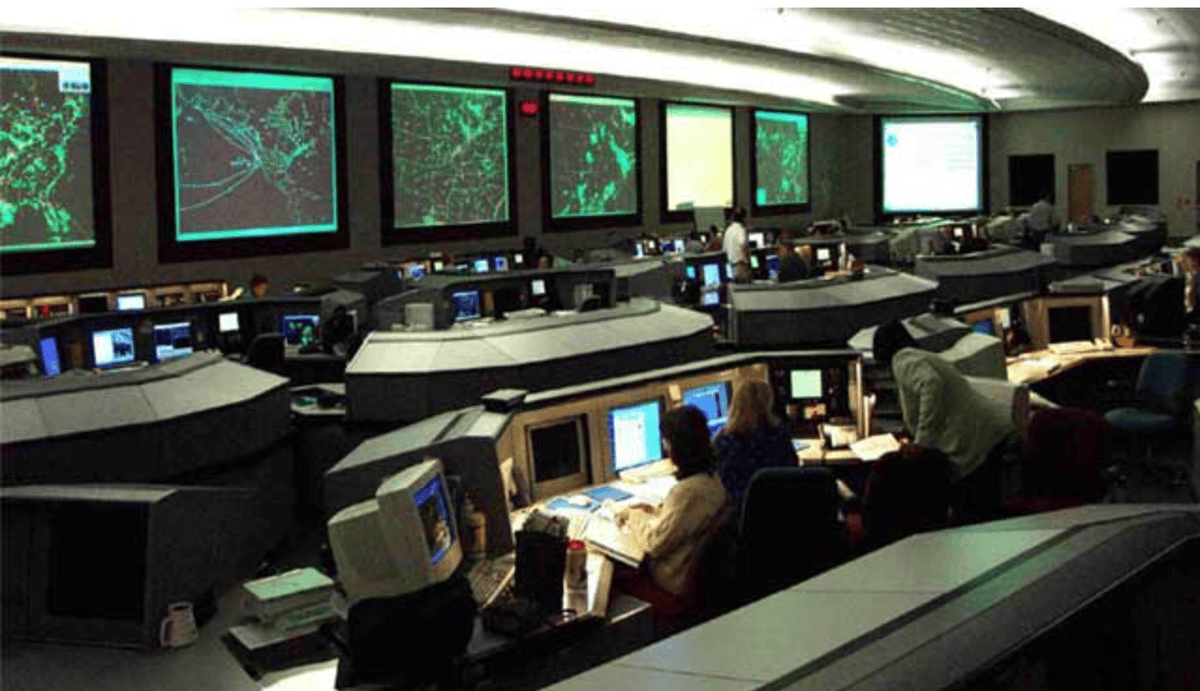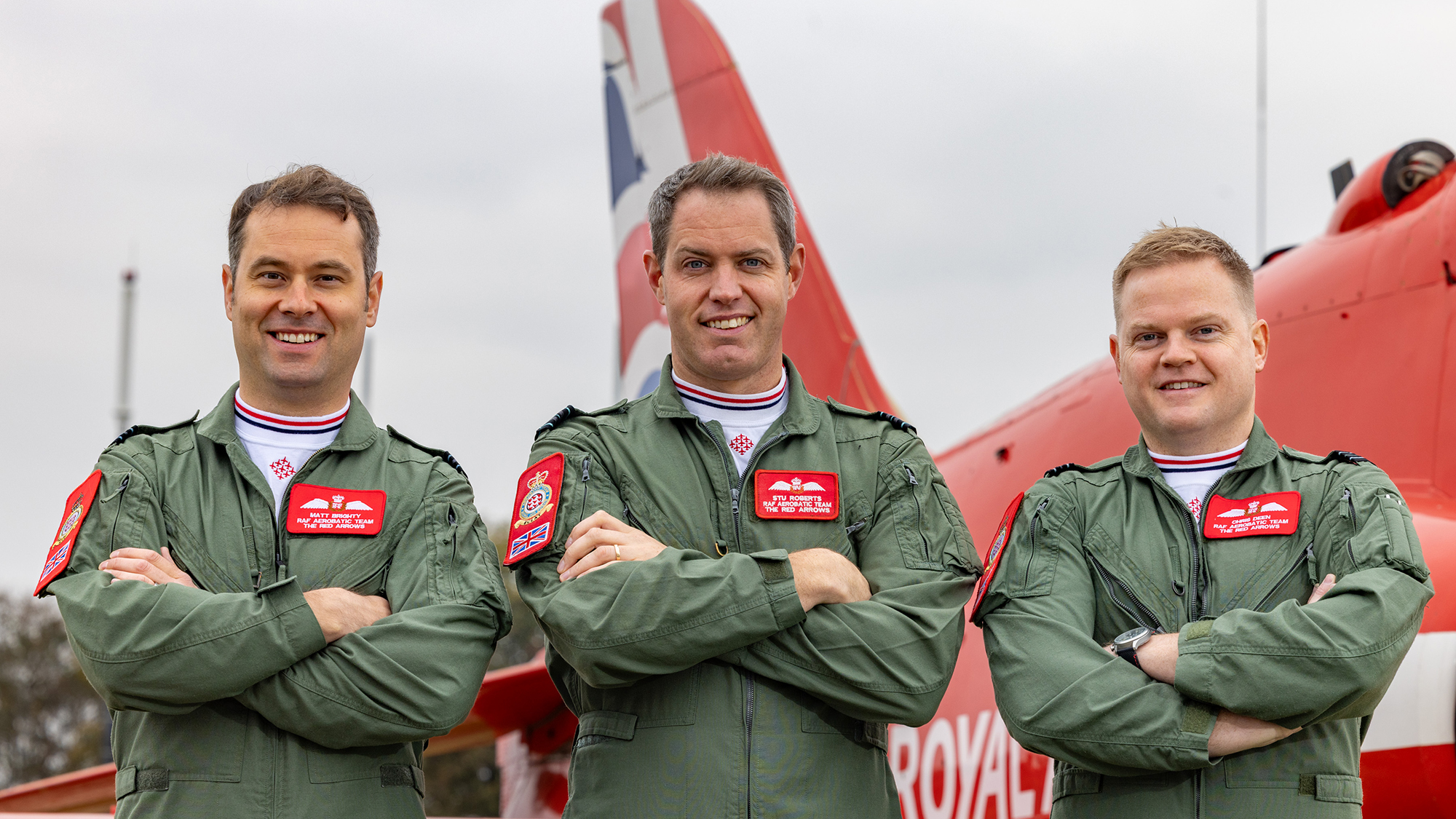The Blue Angels’ C-130J will once again return to Marshall Aerospace in the United Kingdom to have its center wing box replaced, adding decades to its service life.
Marshall Aerospace has announced that the US Navy Blue Angels C-130J, better known as “Fat Albert”, will once again return to the company’s facility in Cambridge, United Kingdom, for maintenance. Specifically, the plane’s center wing box will be replaced, adding decades to its service life.
As we have reported in the past, the current Blue Angels support aircraft is not new to UK skies. In fact, the aircraft is former Royal Air Force Hercules C5 ZH885, which was restored and repainted by Marshalls Aerospace, before being flown to the team’s base at NAS Pensacola, Florida.
“Fat Albert’s return to Cambridge will be a moment of celebration for the entire Marshall Aerospace team. We are grateful to the US Navy for once again entrusting us with such a valuable asset and are delighted to undertake this expert work as one of the few center wing specialists.”
– Chris Dare, Director of MRO Solutions and Services, Marshall Aerospace
“Fat Albert” is expected to arrive in Cambridge later this year, although a date is not available. Specialized maintenance will extend the useful life of the aircraft by more than 20 years, the company states in its Press release.
Additionally, the aircraft will also undergo routine maintenance while at Marshall, including a full paint strip and repaint in the distinctive Blue Angels colors.
Fat Albert’s “spinal surgery”
Marshall Aerospace has described the center wing box replacement as a complex engineering procedure similar to invasive spinal surgery. The comparison is not coincidental, as the wing center box is a critical structural component of the wing.

Specifically, this is the main primary structure that connects the aircraft’s outer wings to its fuselage and therefore carries significant operational loading and withstands exceptional stress during flight. The center wing box is a “life item,” meaning it has a finite operational life in terms of total flight hours or years of service, based on total flight cycles and the fatigue they cause.
Once the component has reached the end of its useful life, it will need to be replaced to keep the aircraft airworthy. In this way, flight safety will continue to be preserved, avoiding structural failures due to fatigue.
This is especially important in the case of Fat Albert, as he begins each Blue Angels show with a 15-minute demonstration that includes low-altitude high-speed steps, steep climbs, steep inclines, and combat landings. Obviously, this takes its toll, resulting in increased stress and fatigue on the airframe over the years.
As a consequence, this also requires an unusual degree of expert care and maintenance planning, Marshall says. Fat Albert is currently the only C-130 to regularly perform flight demonstrations.


C-130 center wing box replacement
This is what we wrote recently here at The aviationist about C-130 center wing box replacement:
The C-130 is known for its longevity, with some aircraft flying for almost 70 years. However, even the toughest airframe experiences wear and tear after decades of demanding operations. Critical components, including the center wing box, which connects the fuselage to the outer wings and supports significant flight loads, have a defined operational life, typically about 20 years. Once these limits are reached, replacement is essential to maintain airworthiness.
Lockheed Martin developed a life-enhanced center wing box that can extend the operational life of a C-130 by more than 20 years. Replacing it is a very complex process comparable to invasive spine surgery, requiring specialized engineering knowledge, certified kits and precision tools.
Marshall Aerospace has pioneered this work outside the United States. The process involves removing surrounding components, including wings, fuel systems, wiring and pipes, and then safely separating the old box from the center wing using overhead cranes. The main structures of the aircraft are inspected and any problems are rectified before the new wing box is installed and connected. Modernized plumbing, wiring and removable fairings are integrated to simplify future maintenance. Extensive ground and flight tests are then carried out to certify the aircraft.
Since the 1970s, Marshall has completed nearly 80 center wing box replacements on vintage and current C-130 models, extending the combined service life of these aircraft by more than 1,600 years. Their expertise has earned them recognition as the world’s first authorized Center of Excellence for C-130 center wing box replacements.
Fat Alberto C-130J
The US Navy retired the former “Fat Albert” C-130T Bu.No in 2019. 164763 that flew more than 30,000 hours with the Blue Angels since 2002. The plane was also famous for spectacular jet-assisted takeoff They performed during air shows until the last supply of JATO bottles ran out (something we sadly won’t see with the new “Fat Albert”).
NAVAIR (Naval Air Systems Command) decided to replace the C-130T with a sold UK aircraft due to significant cost savings and because due to the high operational tempo, the Navy was unable to withdraw the replacement aircraft from the fleet. The Hercules was in storage when the RAF retired the standard C-130J (Hercules C5) and decided to keep only the longer C-130J-30 (Hercules C4) in service.
While Marshalls Aerospace refurbished and repainted the Hercules C5 ZH885, the team’s pilots transitioned to the new Hercules variant and traveled to Cambridge. The new livery designed for the “Fat Albert” C-130J was presented in 2020, with some significant differences from the previous one.



